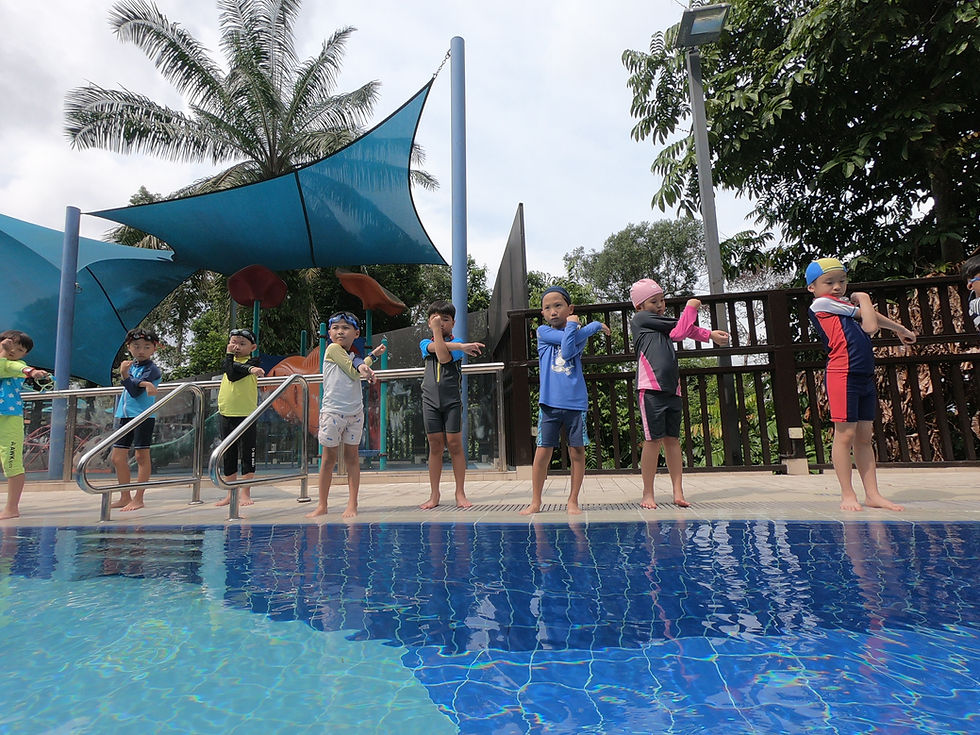Integrating Stroke Technique into IM Workouts
- SG Sink Or Swim

- 43 minutes ago
- 4 min read

Mastering the Medley — Where Technical Precision Meets Competitive Power
The Individual Medley (IM) is often called the ultimate test of a swimmer’s versatility. It demands mastery of four distinct strokes — butterfly, backstroke, breaststroke, and freestyle — each with its own rhythm, timing, and technical demands. Yet too many IM workouts focus solely on endurance and pacing, treating the strokes as interchangeable legs rather than unique disciplines requiring individual attention.
The result? Swimmers develop “good enough” technique in their weaker strokes, leaving speed, efficiency, and confidence on the table.
The solution? Integrate targeted stroke technique work directly into your IM training — not as an afterthought, but as the foundation of every set.
In this guide, we’ll show you how to weave stroke-specific technical refinement into your IM workouts so you can build a truly balanced, race-ready medley — one perfect stroke at a time.
🎯 Why Technique Is the Hidden Key to IM Success
While pacing and endurance matter, technical inefficiency is the #1 limiter in IM performance. A weak breaststroke leg can cost 3–5 seconds per 100m. A flat backstroke increases drag. A rushed butterfly pull kills momentum.
Elite IMers don’t just swim four strokes — they command four techniques. And they build that command through deliberate, integrated practice.
“Your IM time isn’t built in the main set — it’s built in the details of each stroke.”— Chase Kalisz, Olympic 400 IM Gold Medalist
🔄 The 4-Part Framework for Technical IM Training
1. Stroke-Specific Warm-Ups
Don’t start IM sets cold. Prime each stroke’s neuromuscular pattern early.
✅ Example Warm-Up (20 min):
200m easy choice
Butterfly: 4 x 25m fist drill + 4 x 25m dolphin kick
Backstroke: 4 x 25m 6-kick switch + catch-up
Breaststroke: 4 x 25m vertical kick + 3-2-1 timing drill
Freestyle: 4 x 25m fingertip drag + catch-up
💡 This “stroke activation” primes muscle memory before main sets.
2. Isolated Technique Sets Within IM Workouts
Dedicate portions of your workout to refining one stroke at a time — even in IM-focused sessions.
✅ Sample Structure:
Main Set Part 1: 4 x 50m Breaststroke (focus: narrow kick, low head)
Main Set Part 2: 4 x 50m Backstroke (focus: body roll, flip turns)
Main Set Part 3: 2 x 100m IM Order (apply technique under fatigue)
🎯 Cue: “Today’s IM is only as strong as your breaststroke — so we fix that first.”
3. Transition-Focused Drills
IM isn’t just four strokes — it’s three critical transitions. Train them like starts.
✅ Essential Transition Drills:
Fly → Back: Blind flip turns with streamline focus
Back → Breast: Legal touch-on-back + fast tuck
Breast → Free: Immediate, powerful freestyle breakout
✅ Drill Example:
8 x 25m IM Transitions (6.25m per stroke)
Focus: Streamline tightness, legal touches, underwater distance
⚠️ Rule Reminder: Back-to-breast must touch while on back — illegal turns = DQ.
4. Fatigue-Based Technique Checks
Great technique holds up under pressure. Train it that way.
✅ How to Do It:
Swim 4 x 100m IM at 85% effort
After each 100m, ask:
“Did my breaststroke timing break down?”
“Did my backstroke roll disappear?”
“Was my butterfly recovery tense?”
Use video or coach feedback to confirm
📊 Track stroke count per 25m — rising count = technique fatigue.
🏊♀️ Sample Technical IM Workout (60 Minutes)
Warm-Up (15 min):
400m easy + stroke-specific activation (as above)
Technique Focus (20 min):
4 x 25m Fly: Fists-only → open hand (feel forearm catch)
4 x 25m Back: 6-kick switch (build rotation)
4 x 25m Breast: 3-2-1 drill (timing)
4 x 25m Free: Fingertip drag (high elbow)
Transition Work (10 min):
6 x 25m IM Transitions (focus: legal, fast turns)
4 x 15m Pullout Sprints (fly & breast)
Main Set (10 min):
3 x 100m IM @ race pace
Odd 50s: Focus on weak stroke
Even 50s: Negative split
Rest: 90s
Cool-Down (5 min):
200m easy + stroke count reflection
🧠 Coaching Cues by Stroke (IM Context)
Butterfly | “Breathe low, quick, forward” | Prevents hip drop before backstroke |
Backstroke | “Rotate 30° — don’t swim flat” | Sets up powerful pull into breaststroke |
Breaststroke | “Kick like you’re snapping a towel” | Maintains momentum for freestyle anchor |
Freestyle | “Catch high, recover relaxed” | Unleashes speed without wasting energy |
📈 How to Track Technical Progress in IM
Split Times by Stroke: Identify weak legs (e.g., breaststroke 5s slower than peers)
Stroke Count: Should stay consistent under fatigue
Underwater Distance: 10–15m off each wall = free speed
Video Analysis: Monthly comparison of transitions and body position
💡 Use FORM goggles or coach filming to auto-track splits and stroke count.
⚠️ Common Mistakes to Avoid
❌ Skipping stroke-specific work → Weak legs get weaker
❌ Only swimming full IM sets → No time to fix mechanics
❌ Ignoring transitions → Lose 0.5–1.0s per turn
❌ Training IM when exhausted → Reinforce bad habits
Final Thoughts
Great IM swimming isn’t about surviving four strokes — it’s about excelling in all four. And that excellence is built not in heroic main sets, but in the quiet attention to detail: the high elbow in freestyle, the snap of the breaststroke kick, the roll into backstroke, the low breath in butterfly.
So the next time you push off for an IM set, don’t just go through the motions.Lead with purpose.Pull with precision.Turn with speed.And let every stroke declare: “I own this medley.”
Fly strong. Roll smooth. Kick tight. Finish fast.
Because in the IM, mastery isn’t optional — it’s the margin of victory. 💙🏊♂️





Comments